Sometimes, ugly walls might just wear on your last nerve. You can't stand to see it anymore, but you can't fix it either. Maybe you don't have the money to redo the wall. You might have future plans for the space and just need a short term fix. Or, like many others, maybe you rent and can't make permanent changes. Then just how can you cover up those walls before the very sight drives you insane?
We've found several great solutions for you below. Here are ten affordable ways to cover your walls that can be done in a short time.
- Foam board
- Large art prints
- Starched fabric wall covering
- Loose fabric wall covering/curtain
- Tapestry wall hanging
- Vinyl wall decals
- Peel and stick wallpaper
- Mirrors
- Cork panels
- Whiteboard
Read on for project details, materials you'll need, and average cost. Cost ranges from $ (50 dollars or less), $$ (150 dollars or less), or $$$ (greater than 150 dollars), and assumes the cost of installing over an eight-foot by ten-foot wall. Also, if you do decide to paint over everything, we'll help you figure out what paint can cover uneven walls the best, and alternative methods for replacing the walls.
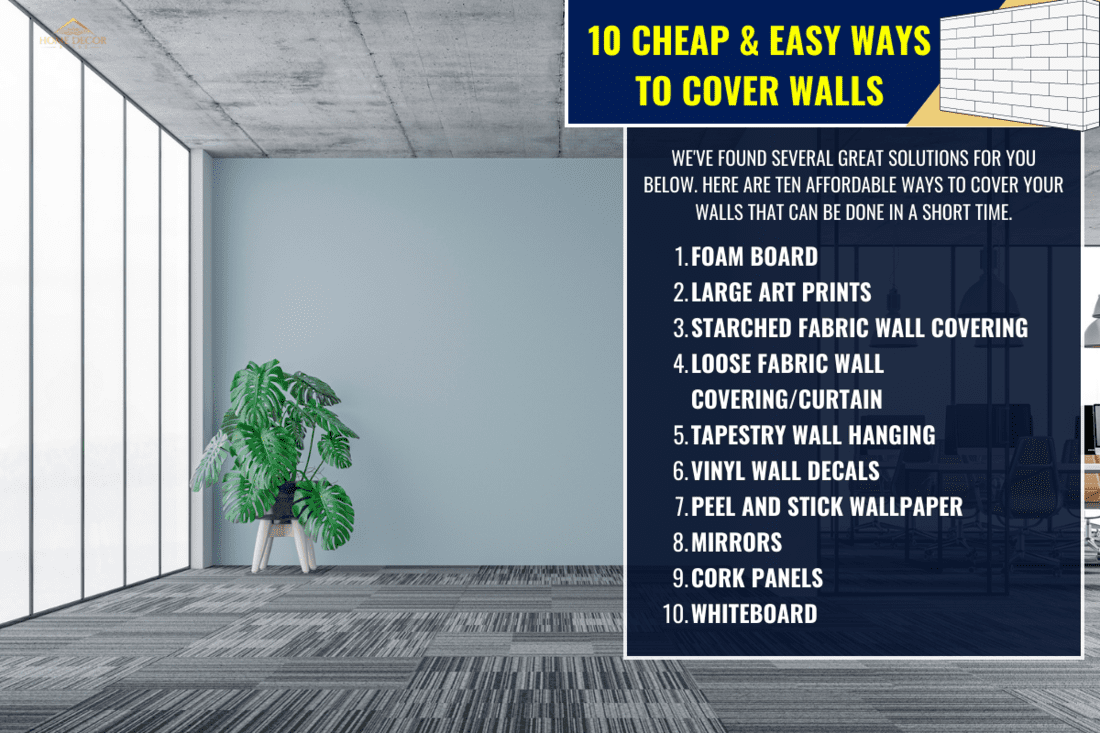
1. Foam board
2. Large Art Prints
Try using several large pieces of artwork that both cover the wall and decorate the room.
Click here to see this artwork on Amazon.
This is likely to be the most expensive option, as most artwork isn't cheap. However, if the goal is to save money, there are definitely lower-cost options out there.
Cost: $-$$$, due to the range of cost for art pieces.
3. Starched Fabric Wall Cover

4. Loose Fabric Wall Cover
This one is a lot like the idea above, however, the fabric isn't applied directly to the wall. Fabric may either be held up with tacks or hung from a curtain rod.
Curtains or flat sheets will work equally well. Flat sheets are often found cheaper, and make the most affordable option. For example, this sheet can be found on Amazon in more than 20 colors. Depending on the size and number of sheets you need, it can be a very low-cost option.
Click here to see this sheet on Amazon.
Cost: $
5. Tapestry Wall Hanging
So far, you've considered hanging large art and hanging plain fabric. But what if you could combine the two? Well, with a tapestry, you can. This is easiest to match with bohemian decor, as most tapestries have a modern, quirky art style to them. Cost: Around $20
Click here to see this tapestry on Amazon.
Cost: $
6. Vinyl Wall Decals
Vinyl wall decals can be applied with no lasting damage to the wall. Just stick them on the wall where desired and peel them off when you're done. You can get versions that don't cover the entire wall surface, which cost about $20. Other options, such as the one below, are meant to be applied over the entire surface, one sticker at a time. Since these cover a wider area, materials are also more expensive.
Click here to see these decals on Amazon.
Cost: $ (for options that don't cover the whole wall) to $$$ (when completely covering a large wall).
7. Peel and Stick Wallpaper
Similar to decals, peel and stick wallpaper can be removed once you're done with no damage to the wall. Wallpaper, however, comes on a roll. It's installed in a few large sections to cover the wall, making it an easier choice for large areas.
Click here to see this wallpaper on Amazon.
Cost: $$$
8. Mirrors
For a large wall, try installing a wide rectangular mirror. For smaller areas, you can just use mirror stickers like these. It's not the cheapest wall covering, but it does look classy. Stuck in a rental and can't install mirrors into the wall? Try: How To Put Mirrors On Walls Without Nails
Click here to see mirror stickers on Amazon.
Cost: $$$
9. Cork Panels
Cover a wall with these self-stick cork panels. Then, not only does your wall look better, it's functional too!
Click here to see these cork panels at Amazon.
Cost: $$$
10. Whiteboard
Cover the walls with a whiteboard, like this one:
Click here to see this whiteboard on Amazon.
This is a great idea in a kids' room or a play area. It can also help with organization, especially if you only need a small space covered.
Cost: $$
How Can I Hide Uneven Walls?
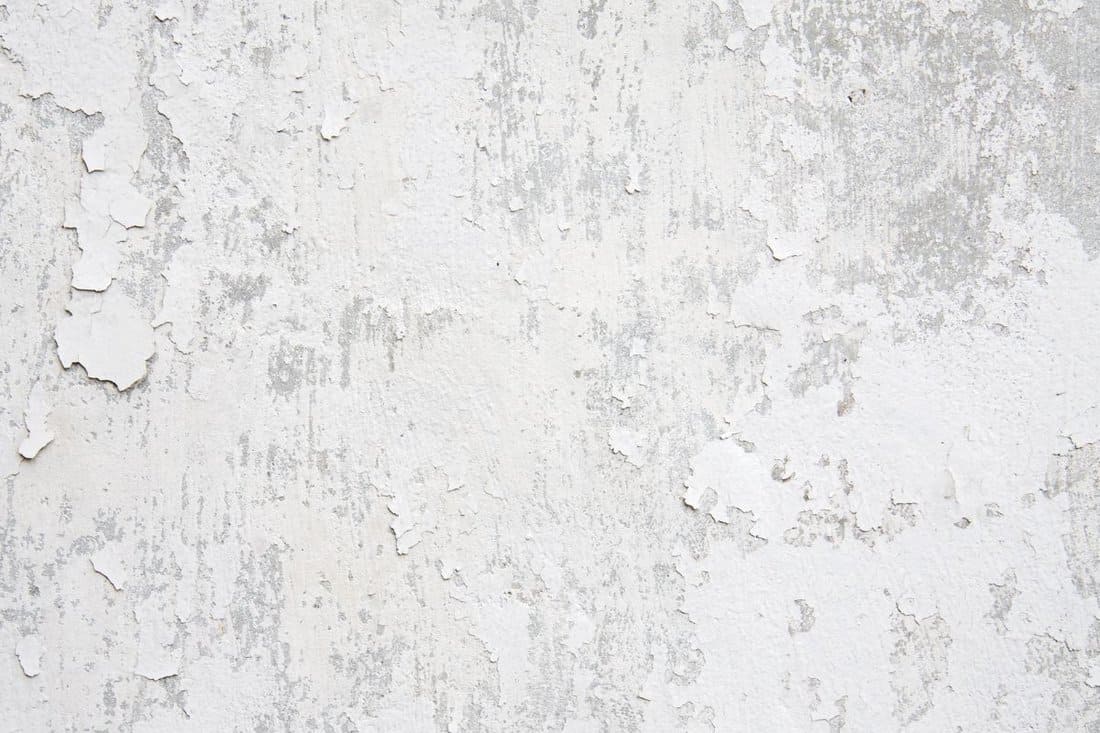
If your uneven walls drive you to distraction, and covering them with one of our previous options doesn't work, you may have to take drastic measures. These can include texturing the wall, painting over it, or replacing it entirely.
Texture The Wall
For this method, you cover the wall with textured plaster. Texturing the walls will reduce any obvious unevenness.
Click here to see plaster on Amazon.
Apply with a roller across the surface. This will give the wall a distinctive appearance and conceal any problem areas. Done correctly, this can even make a wall into a special accent piece. You can also use textured paint for a similar effect.
Paint Over It
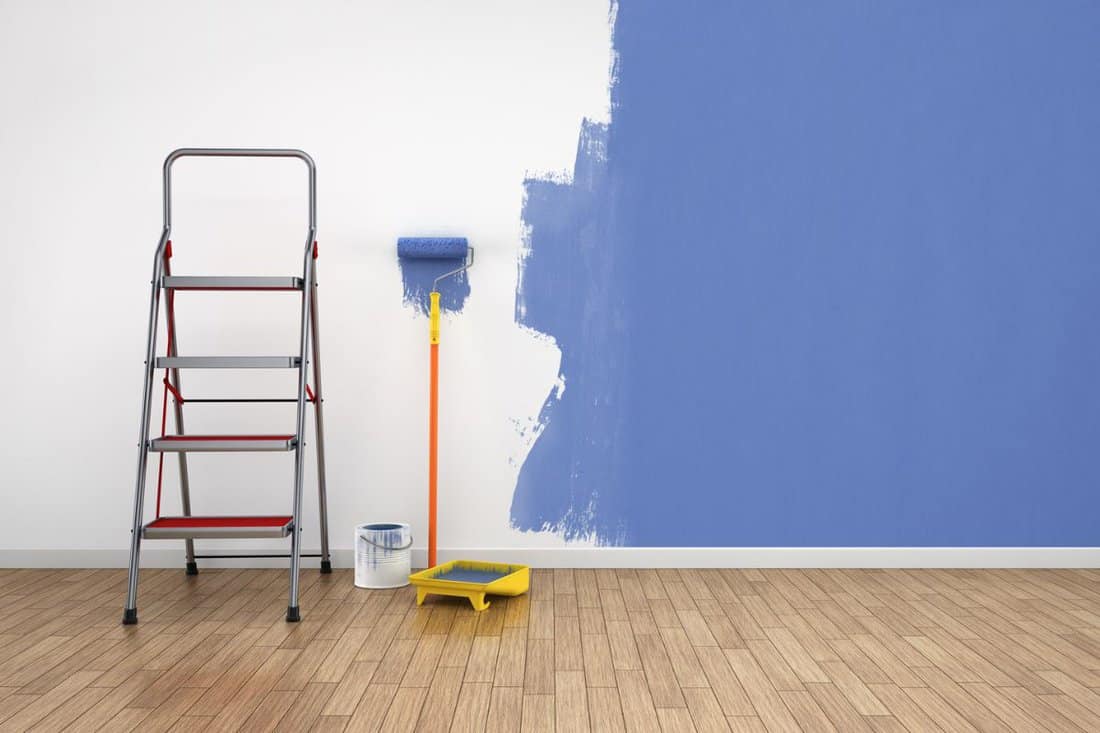
To paint over an uneven wall, you'll need to use some unusual tricks. Pick paints that hide imperfections, first of all. Then, there are several techniques you could use to paint. Color-washing, rubbing, glazing, and sponging all can be utilized to make any imperfections seem like a deliberate part of the paint job. Below, watch a demonstration of the sponge technique:
What Paint Colors Hide Imperfections On Walls?
While sponging and other related techniques are the best way to hide imperfections, you still need to use the right paint. Stick with a flat finish, always. Glossy paints reveal uneven spots and imperfections.
Dark colors also absorb, rather than reflect, light. As a result, any flaws are less noticeable. However, you'll still need to be careful that you don't select anything too dark. Dark colors tend to make spaces seem small, cramped, and overwhelming. Finding a color that is a happy medium (dark, but not too dark) is key to a good design.
Replace the Wall
This is exactly what it sounds like. It's not easy, but sometimes, it just needs to be done. If your walls are too far gone for any other intervention, then replacing them altogether may be the answer. You'll have to knock out the old wall and put in new drywall, or another suitable material.
Is There Anything Cheaper Than Drywall?
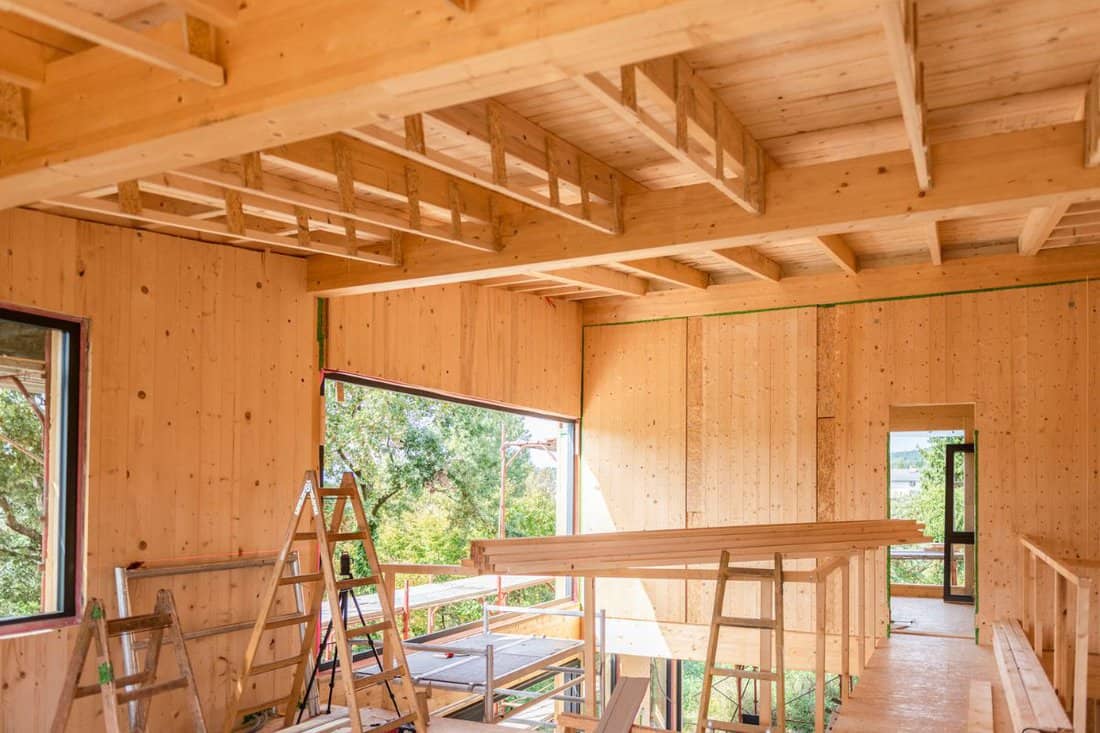
Plywood is the cheapest alternative to drywall. If you're concerned that the final product may look cheap or poor, then try surfaced sheet wood. It looks a bit nicer but is still affordable. Medium-density fiberboard or high-density fiberboard may also be appropriate, depending on where they are installed. For example, they do not do well in moist areas such as the bathroom.
Corkboard or pegboard is not, necessarily, cheaper than drywall. However, they turn the walls into something a bit more functional. If this is useful in the space, then they are worth consideration.
In Summary
If you can't afford to redo your walls at the moment, you don't need to feel shame and guilt every time you look at them. There are pleasing ideas out there that still allow you to cheaply reinvent the space. The only limit to ideas for covering your walls is your own creativity. Fabric, foam board, and peel and stick options can all help transform the space. Good luck and happy decorating!
If you enjoyed this, read:
25 Wonderful Wood Paneling Ideas for Your Walls
Is Stone Veneer Worth It? Stone Interior Walls Pros and Cons
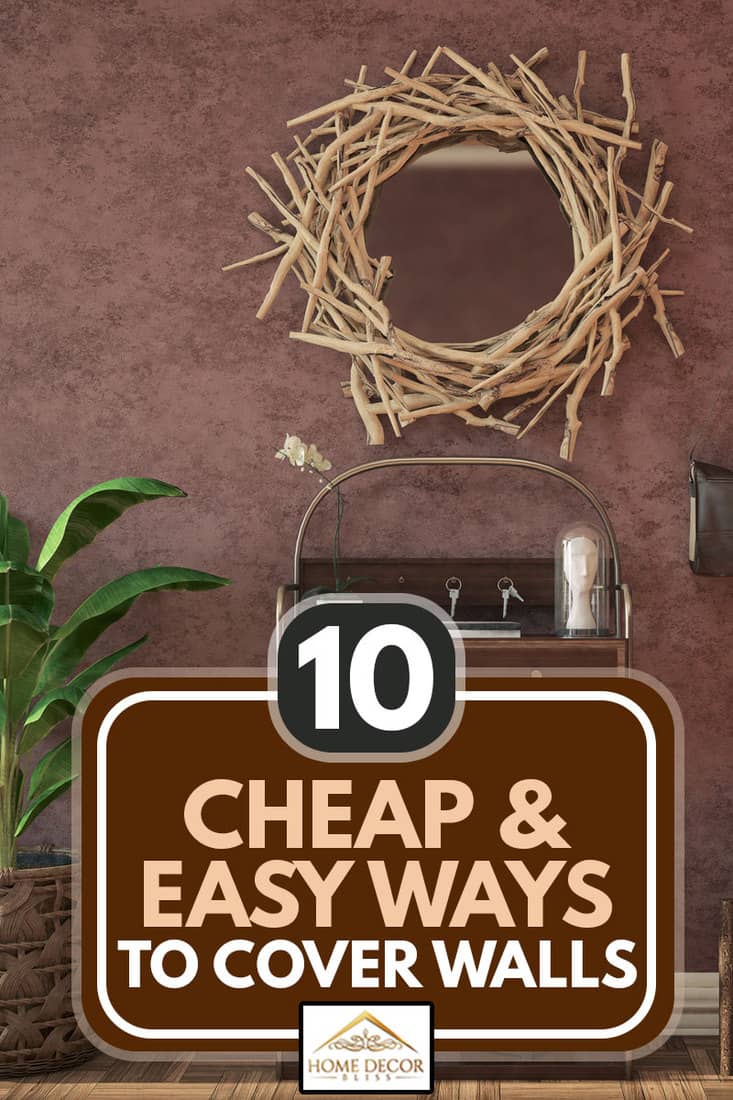
FAQs
What is the best way to cover damaged walls?
The best way to cover damaged walls depends on the extent of the damage. For minor damage, such as small holes, spackle can be used to patch up the area. For more severe damage, such as large holes or cracks, drywall can be used to cover the area. Sometimes, a wall may need to be completely replaced if it is too severely damaged.
How do you cover up drywall damage?
To cover up drywall damage, follow these steps: 1. Clean the area and let it dry. 2. Use a putty knife to apply a thin layer of spackle over the damaged area. 3. Allow the spackle to dry and sand it with a fine-grit sandpaper. 4. Apply a second layer of spackle if necessary. 5. Once the spackle is dry, use a primer to seal the area. 6. Paint the area with the same color as the surrounding wall.
How do you paint a badly damaged wall?
To paint a badly damaged wall, you'll need to fix the damage first before applying paint. Here's a general guide on approaching the process: 1. Remove wallpaper from the wall. 2. You can fill any holes or cracks in the wall with a spackle 3. Sand the patched areas until smooth. 4. Prepare the wall by applying a coat of primer. 5. Once the primer is dry, apply two coats of paint. 6. Ensure the paint is completely dry before applying a sealer or topcoat.
How do you cover a bad wall without plastering?
If you're looking to cover a lousy wall without plastering, there are several alternative options you can consider. Here are a few ideas: 1. Put up a tapestry or wallpaper. 2. Install wainscoting or paneling. 3. Hang a fabric wall hanging. 4. Apply a concrete skim coat. 5. Paint the wall with textured paint. 6. Install wood shiplap. 7. Cover the wall with removable wallpaper. 8. Install textured wall tiles. 9. Use decorative wall covering. 10. Hang wall art or photographs.










